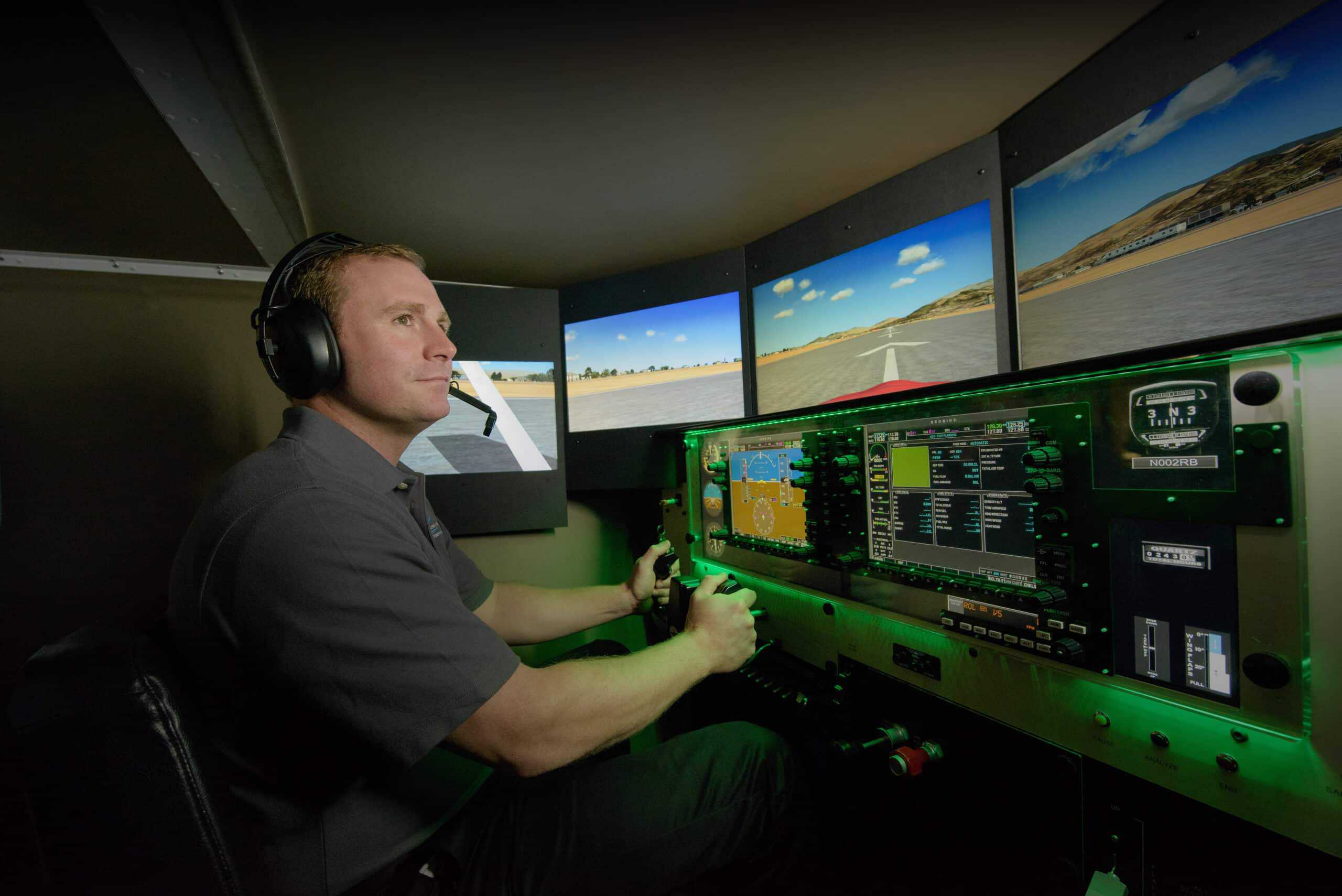What are ADS-B and Foreflight – The best guide

What are ADS-B and Foreflight?

ADS-B and Foreflight explained
Introduction to ADS-B and its importance in aviation
The world of aviation has been revolutionized by the introduction of ADS-B technology. The use of ADS-B, or Automatic Dependent Surveillance-Broadcast, has become increasingly important in maintaining the safety and efficiency of our skies. This revolutionary technology allows pilots to have real-time access to vital information about their aircraft and surrounding airspace, improving situational awareness and enhancing overall flight safety.
In this article, we will be exploring the world of ADS-B, its importance in the aviation industry, and its impact on ForeFlight and airspaces, particularly at Florida Flyers Flight Academy. Aspiring pilots and aviation enthusiasts alike will find this information valuable in understanding the future of aviation and how to master the skies using this cutting-edge technology.
What is ADS-B? A brief overview
ADS-B is an advanced surveillance system that enables aircraft to broadcast their position, altitude, airspeed, and other vital information to air traffic controllers and other aircraft in real-time. This data is transmitted through an ADS-B transponder installed on the aircraft, allowing for seamless communication between all parties in the sky.
The primary purpose of ADS-B is to improve the safety and efficiency of flight operations by providing real-time information about surrounding aircraft. This technology allows pilots to maintain better situational awareness in the cockpit, enabling them to make informed decisions about their flight paths and avoid potential collisions.
ADS-B Transponder explained: How it works
An ADS-B transponder is a crucial component of the ADS-B system. It collects data from the aircraft’s avionics, such as position, altitude, and airspeed, and broadcasts this information to other aircraft and air traffic control stations. The ADS-B transponder operates on two frequencies, 1090 MHz for commercial aircraft and 978 MHz for general aviation.
There are two types of ADS-B transponders: ADS-B-Out and ADS-B-In. ADS-B-Out is the most basic form of ADS-B, transmitting only the aircraft’s information. ADS-B-In, on the other hand, receives information from other aircraft and ground-based ADS-B stations, providing pilots with a complete picture of the airspace around them.
FAA’s ADS-B rules and regulations
The Federal Aviation Administration (FAA) has established ADS-B rules and regulations to ensure the safe and efficient use of this technology. As of January 1, 2020, the FAA requires all aircraft operating in certain controlled airspace to be equipped with ADS-B-Out.
These rules apply to aircraft flying in Class A, B, and C airspace, as well as Class E airspace at and above 10,000 feet mean sea level (MSL). The mandate also covers airspace within 30 nautical miles of airports in Class B airspace and airspace above the ceiling and within the lateral boundaries of Class B and C airspace up to 10,000 feet MSL.
ADS-B mandatory implementation: What you need to know
As ADS-B technology continues to evolve and become more integrated into the aviation industry, it is essential for pilots and aircraft owners to be aware of the mandatory implementation requirements. In the United States, the FAA has mandated ADS-B-Out for all aircraft operating in certain controlled airspace.
This means that pilots and aircraft owners must ensure their aircraft are equipped with an ADS-B-Out transponder that meets the FAA’s performance requirements. Failure to comply with this mandate could result in penalties such as fines and grounding of the aircraft.
Florida Flyers Flight Academy: Preparing for the ADS-B era
In light of the FAA’s ADS-B mandate and the growing importance of this technology, Florida Flyers Flight Academy has taken steps to ensure its students are prepared for the ADS-B era. The academy’s fleet of aircraft is equipped with ADS-B-Out transponders, providing students with hands-on experience using this technology.
In addition to ADS-B-equipped aircraft, Florida Flyers Flight Academy also provides its students with comprehensive ground training on ADS-B and its applications in aviation. This training includes information on ADS-B rules and regulations, as well as practical tips for using ADS-B technology in the cockpit.
Understanding the connection between ADS-B and ForeFlight
ForeFlight is a popular electronic flight bag (EFB) application that provides pilots with a wealth of information to enhance their situational awareness and flight planning. One of the keyfeatures of ForeFlight is its integration with ADS-B technology, allowing pilots to receive real-time information about surrounding aircraft and airspace.
When using ForeFlight with an ADS-B-In receiver, pilots can view nearby aircraft on their map display, including altitude, groundspeed, and heading. This information is constantly updated, providing pilots with a complete picture of their surroundings and allowing them to make informed decisions about their flight path.
ForeFlight also provides pilots with crucial information about airspace, such as weather conditions, temporary flight restrictions, and NOTAMs (Notices to Airmen). This information is essential for flight planning and ensuring that pilots remain compliant with FAA regulations.
What is ForeFlight? A comprehensive guide
For those unfamiliar with ForeFlight, it is a powerful EFB application that provides pilots with a wealth of information to enhance their flight planning and situational awareness. ForeFlight is available on multiple platforms, including iOS and Android devices, as well as web browsers.
Some of the key features of ForeFlight include:
- Flight planning tools: ForeFlight provides pilots with a comprehensive suite of flight planning tools, including route planning, performance calculations, and fuel planning.
- Navigation and situational awareness: ForeFlight’s map display provides pilots with a complete picture of their surroundings, including nearby airports, airspace, and terrain.
- Weather information: ForeFlight provides pilots with real-time weather information, including radar imagery, METARs (Meteorological Aerodrome Reports), and TAFs (Terminal Aerodrome Forecasts).
- NOTAMs and Temporary Flight Restrictions: ForeFlight provides pilots with up-to-date information on NOTAMs and TFRs (Temporary Flight Restrictions) that may impact their flight.
- Electronic logbook: ForeFlight’s electronic logbook allows pilots to easily track their flight hours and maintain accurate records of their flights.
Flight students at Florida Flyers Flight Academy and ForeFlight usage
At Florida Flyers Flight Academy, ForeFlight is an essential tool for flight students. The academy encourages its students to use ForeFlight as part of their flight planning and situational awareness, providing them with the necessary training to use this powerful tool effectively.
By using ForeFlight with an ADS-B-In receiver, Florida Flyers Flight Academy’s students can gain valuable experience using this technology in the cockpit. This experience is essential for preparing them for the ADS-B era and ensuring they are equipped with the skills necessary to operate safely and efficiently in the sky.
ADS-B requirements for pilots and aircraft
As previously mentioned, the FAA has mandated ADS-B-Out for all aircraft operating in certain controlled airspace. This mandate applies to all aircraft, including general aviation aircraft, helicopters, and drones.
To comply with this mandate, aircraft must be equipped with an ADS-B-Out transponder that meets the FAA’s performance requirements. Additionally, pilots must be trained on the use of ADS-B technology and its applications in aviation.
Navigating ADS-B-required airspaces: Tips and tricks
Navigating ADS-B-required airspaces can be challenging for pilots, particularly those who are new to the technology. However, with the right training and preparation, pilots can navigate these airspaces safely and efficiently.
Some tips and tricks for navigating ADS-B-required airspaces include:
- Ensure your aircraft is equipped with an ADS-B-Out transponder that meets the FAA’s performance requirements.
- Familiarize yourself with the rules and regulations surrounding ADS-B and its use in aviation.
- Use ForeFlight or other EFB applications to enhance your situational awareness and flight planning.
- Stay up-to-date on NOTAMs and Temporary Flight Restrictions that may impact your flight.
- Always maintain communication with air traffic control and other pilots in your vicinity.
Conclusion: Mastering the skies with ADS-B and ForeFlight at Florida Flyers Flight Academy
In conclusion, ADS-B technology has become an essential component of the aviation industry, improving safety, and efficiency in our skies. At Florida Flyers Flight Academy, students receive comprehensive training on ADS-B and its applications in aviation, preparing them for the ADS-B era and ensuring they are equipped with the skills necessary to operate safely and efficiently in the sky.
By using ForeFlight with an ADS-B-In receiver, students gain valuable experience using this technology in the cockpit, enhancing their situational awareness, and improving their flight planning. With the right training and preparation, pilots can navigate ADS-B-required airspaces safely and efficiently, ensuring the safety and efficiency of our skies for years to come.
Ready to learn more about Florida Flyers Flight Academy? Contact us or call the Florida Flyers Admissions Team at +1 904 209 3510



